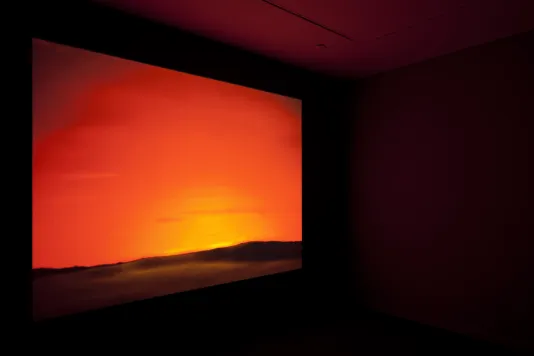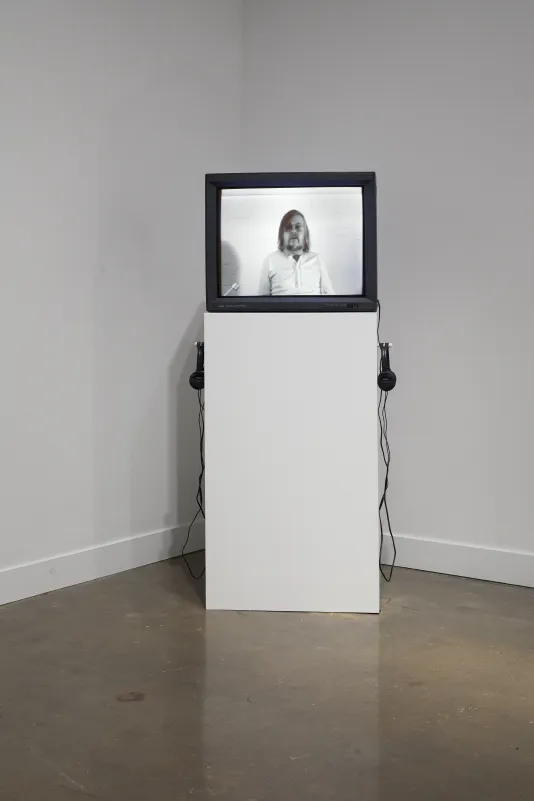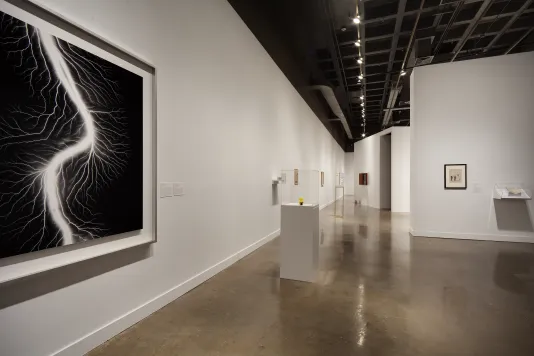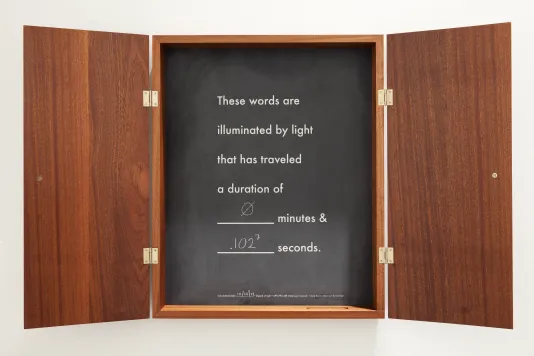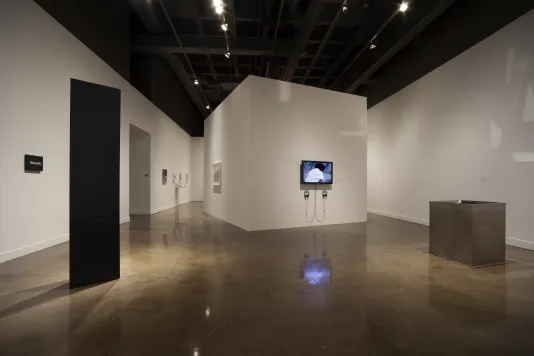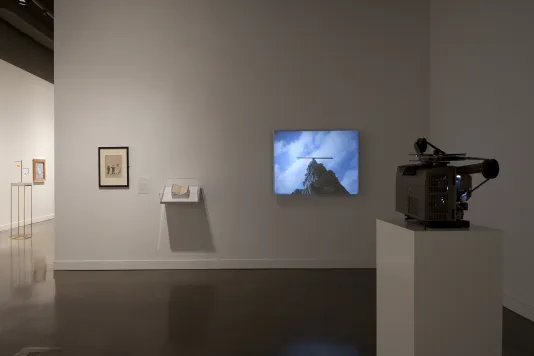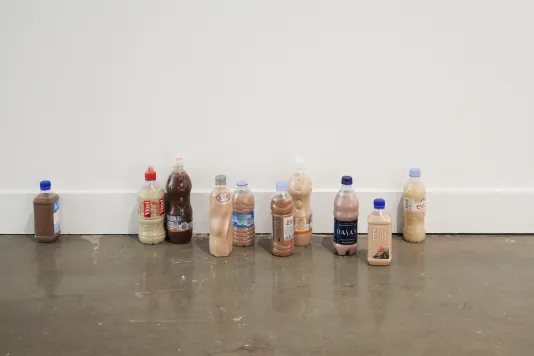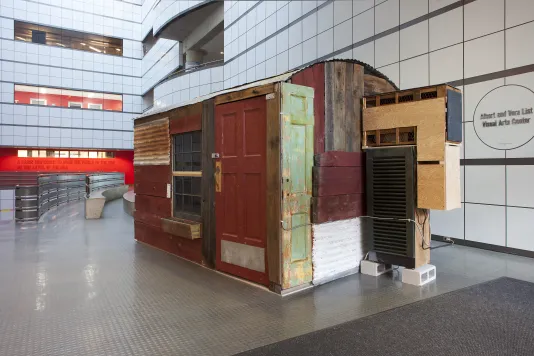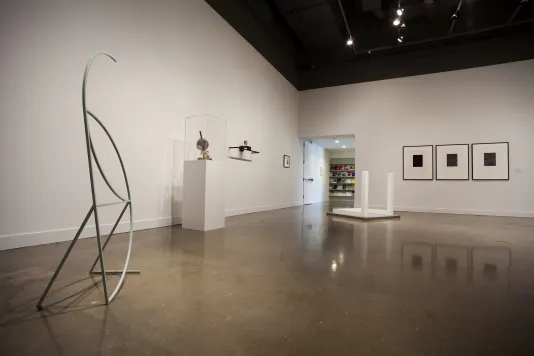Laurent Grasso, Eclipse, 2006, Animation, DVD video, 10 mins, Installation view, MIT List Visual Arts Center, 2012. Courtesy of the artist and Sean Kelly Gallery, New York
In the Holocene

The MIT List Visual Arts Center is pleased to present In the Holocene, a group exhibition on view from October 19, 2012, to January 6, 2013, that explores art as a speculative science, investigating principles more commonly associated with scientific or mathematical thought.
Through the work of an intergenerational group of artists, the exhibition will propose that art acts as an investigative and experimental form of inquiry, addressing or amending what is explained through traditional scientific or mathematical means: entropy, matter, time (cosmic, geological), energy, topology, mimicry, perception, consciousness, et cetera. Sometimes employing scientific methodologies or the epistemology of science, other times investigating phenomena not restricted to any scientific discipline, art can be seen as a form of inquiry into the physical and natural world. In this sense, both art and science share an interest in knowledge, realism, and observable phenomena, yet are subject to different logics, principles of reasoning, and conclusions.
In aiming to expand the potential of what can be contained within the domain of artistic and scientific speculation, In the Holocene seeks to shift the understanding of aesthetics away from conventional ideas of pleasure, beauty, or taste. As conceived by Alexander Baumgarten in 1735, the term “aesthetics,” as the science of sensible knowledge, attempted to place the realm of perception and sensation under rational principles, and so to raise it to the level of a science. Yet the aesthetic became linked instead to ideas of taste or judgment, rather than knowledge derived from aesthetic modalities. Situated between empiricism and enchantment, it was deemed in contrast to the domain of reason or thought, such as mathematics or logic. As an account of the world, can art expand the potential of speculative or scientific inquiry?
The exhibition takes its title from Max Frisch’s 1980 novella, Man in the Holocene, in which the narrator gathers selections from encyclopedias and books to preserve knowledge as a deluge threatens to destroy his village. Of particular interest to the narrator is information about our geological present, the Holocene, which includes the development of human civilization. The Holocene is thus our period of geological time, in which we attempt to understand the physical and natural laws that govern the universe and the origins of life, while also coping with the significant extent of our own impact on the Earth’s ecosystems.
In the Holocene is accompanied by a series of public programs including film screenings and an artist talk by Trevor Paglen. The exhibition is curated by João Ribas, Curator, MIT List Visual Arts Center.
Sponsors
In the Holocene is made possible by an Emily Hall Tremaine Exhibition Award. The Exhibition Award program was founded in 1998 to honor Emily Hall Tremaine. It rewards innovation and experimentation among curators by supporting thematic exhibitions that challenge audiences and expand the boundaries of contemporary art. The catalogue is supported by the Elizabeth Firestone Graham Foundation. Additional support for this exhibition has been generously provided by the Council for the Arts at MIT; the Massachusetts Cultural Council; and the Office of the Associate Provost at MIT, with special thanks to Centre Iannis Xenakis; the MIT List Visual Arts Center Advisory Committee and the Friends of the List.
